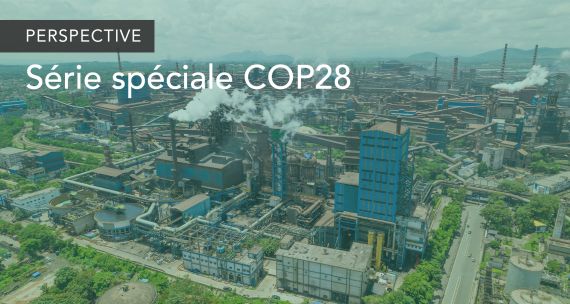British Columbia’s liquefied natural gas super-project appears to have crossed the final hurdle only to find itself in search of a finish line.
Conditionally approved by Ottawa late last month, the proposed C$36-billion Pacific NorthWest LNG plant on B.C.’s North Coast brings the promise of thousands of Canadian jobs and billions in annual taxes and royalties. It signifies the federal government’s commitment to Canada’s future prosperity in the context of a shifting global economy, while strategically positioning Canada as a long-term provider of energy security to key partners in the Asia Pacific.
But as the consortium of Asian energy companies that submitted the Canadian project for regulatory approval three years ago weighs it’s options in a global energy market now flooded with cheap oil and gas, and further considers the 190 conditions attached to Ottawa’s approval, including a cap on annual green house gas emissions, it may be some time before this project crosses the finish line. Or even moves forward.
The halcyon days of hydrocarbons were good to Western Canada, and the energy industry as a whole. A surge in global demand, particularly from the burgeoning economies of Asia, saw a spike in prices and a push to innovate new sources of supply. This was the post-financial crisis era when ‘horizontal drilling’ and ‘hydraulic fracturing,’ or ‘fracking,’ entered our lexicon.
But as we wait for the global energy market to rebound, and for the Petronas-lead consortium to come to a decision regarding its LNG processing plant in Prince Rupert, we need to ask ourselves: What should Canada be doing to fill the gap? The answer comes in two parts: diversify and innovate. Think big, think beyond
If Canada wants to benefit from Asia’s development and growth, and remain a relevant and important energy partner in Asia, we must ‘think big’ about exporting to multiple countries within the Asia Pacific, and ‘think beyond’ oil and natural gas to include all of Canada’s energy related assets, particularly the renewable and clean technologies that will help Asia mitigate its own climate-change challenges.
It is critical that we better understand what Canadian energy resources are under-utilized in Asia, and what those market opportunities entail. Our energy relationship with Asia should be framed within the context of a broader Canada-Asia strategy that champions stronger diplomatic relations, trade and investment agreements with key Asian partners, engagement with Asian regional institutions, and market diversification strategies at the federal, provincial and sectoral levels.
Ultimately, government and the private sector should commit to establishing global centres of excellence in energy research and technology that would place Canada at the forefront of energy research and innovation. But while we wait on that commitment, and for a decision on the North Coast, let’s consider some of the low hanging fruit in Canada’s energy basket. Natural gas is an ingredient used to make fertilizer, antifreeze, plastics, pharmaceuticals, fabrics and a wide range of chemicals. Two Asia-relevant front-runners in this Canadian family of natural-gas-derived hydrocarbons are processed natural gas liquids (NGLs) and methanol.
NGLs and methanol anyone?
The global demand for NGLs — including ethane, propane, butane, isobutane, and pentane — has been rising in response to their increasing use in petrochemical applications, particularly in plastics. These hydrocarbons, which are also burned for heating and cooking and blended into vehicle fuel, are extracted from the natural gas production stream or produced as a by-product of refined oil. According to Canada’s National Energy Board, Canadian NGL exports last year were worth C$1.1 billion. According the NEB, Canada’s NGL exports are closely linked to the U.S. market, which is increasingly meeting heightened demand in Asia, driven largely by the economies of Japan, China and India.
Methanol production is also experiencing a global resurgence, particularly in China where the finished product — typically extracted from solid waste/biomass, but also from natural gas and coal feedstocks — is widely used in chemical production and industrial processes, as well as in blended vehicle fuel. According to the Chemical Industry Association of Canada, Canada exported $106-million worth of methanol in 2014, but mainly to U.S. markets.
The industrial development of NGLs and methanol complements Canada’s existing industry, as these value-added products can be exported alongside current hydrocarbon resources. Utilizing our existing hub of pipelines, rail and truck routes, power plants and skilled labour pools, there is no policy choke point or environmentally sensitive new infrastructure required to get these products to markets in Asia.
While slumping energy prices demand a rethink on market diversity and opportunity, they also create an incentive to increase efficiency through technology and innovation. It is tempting in a down market to retract and wait for the return of better days. But if Canada aspires to be an Asia Pacific energy powerhouse for the long term, it must continue to prioritize innovation, pushing to work smarter and faster in exploration, development, production, services, and in the advancement of the renewable energy alternatives that will come to define the long-term players in the global economy of tomorrow.
Canada will play a vital role in effectively meeting Asia’s changing energy needs and promoting co-operation on a range of issues related to energy and the environment. LNG will play its part in this dynamic, offering a cleaner energy solution to the coal Japan is burning to replace its broken nuclear capacity and China is using to fuel its rapid acceleration through a phase of industrialization. But while we wait for B.C’s LNG mega-project to cross the finish line, let’s take this opportunity to showcase the gold standard that Canada can bring to the energy race through alternative and clean fuels and technologies.
Stewart Beck is the president CEO of the Asia Pacific Foundation of Canada, a not-for-profit organization focused on Canada’s relations with Asia. Before joining APF Canada he was a career diplomat serving abroad in the U.S., Taiwan, China, and India.
This piece was first published in the Vancouver Sun on October 16, 2016



